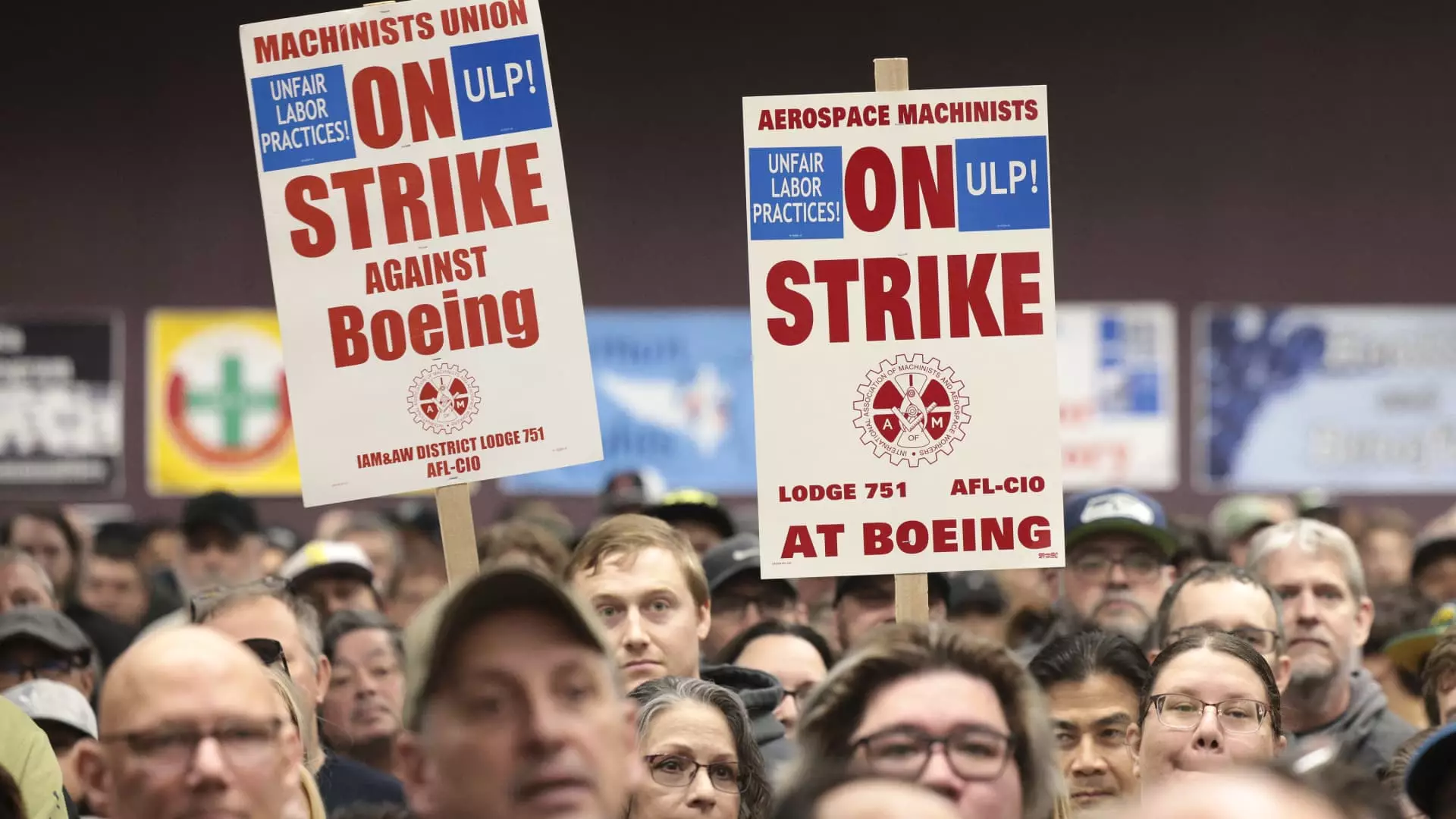Boeing, a cornerstone of the American aerospace sector, faces a formidable challenge as machinists have opted to extend a strike, rejecting a labor agreement that promised meaningful wage increases. This decision has significant implications not only for the company’s operational capacity but also for its financial health and future strategic direction amid a backdrop of longstanding safety and quality issues.
Boeing’s machinists decisively turned down a proposed contract that offered a substantial 35% wage increase over four years. The rejection, with 64% of union members voting against the agreement, underscores a pervasive dissatisfaction among workers, particularly regarding rising living costs in the Puget Sound region and the loss of certain benefits in previous agreements. Such collective action marks the first strike by Boeing’s machinists since 2008, illuminating the volatile nature of labor relations within the aerospace industry, which has been under strain for some time.
Originally, machinists were asking for a 40% wage increase, which highlights their frustration with stagnant wages relative to the cost of living. With negotiations failing, Boeing has had to grapple with the downstream effects of halted production, which is estimated to cost the company about $1 billion monthly, according to S&P Global Ratings. This situation is emblematic of the fragility of the labor market in a post-pandemic economy, where supply chains are delicately balanced and employee retention remains a pivotal concern.
The labor unrest occurs against the backdrop of Boeing’s recent financial disclosures, which revealed a staggering $6 billion loss in a single quarter—the largest since 2020. The implications of these financial setbacks are not trivial; the ongoing strike exacerbates Boeing’s liquidity problems, with forecasts suggesting that the company may continue to “burn cash” through 2025. These financial woes have led to increased scrutiny from stakeholders and analysts alike, as the company struggles to stabilize its operations amid both internal and external pressures.
New CEO Kelly Ortberg has expressed urgency in addressing the strike, highlighting the need to realign worker relations and return to production. His focus on restructuring Boeing’s workforce, including a notable announcement to cut 10% of its global staff, emphasizes a strategic pivot intended to streamline operations but also raises concerns about employee morale and the company’s long-term commitment to its workforce.
The extended strike poses challenges not only for Boeing but also for the entire aerospace supply chain. Many suppliers have been forced to adapt rapidly to personnel changes, retraining new employees or, as seen with Spirit AeroSystems, temporarily furloughing hundreds of workers. The interconnectedness of this industry means that labor disputes at one major company can ripple throughout the network of suppliers, potentially leading to layoffs and further financial difficulties for smaller enterprises.
The fragility of the supply chain following COVID-19 has compounded these issues, as many providers are still grappling with operational and staffing challenges. This upheaval emphasizes the critical need for effective communication and robust planning between Boeing and its suppliers, particularly during labor disputes.
Jon Holden, president of IAM District 751, has indicated that the union remains committed to negotiating a more favorable agreement, signifying that both sides will need to engage in sincere dialogue to break the impasse. The company has been advised to reconsider its labor strategies, focusing on worker benefits and compensation packages that adequately reflect the demands of the current economic landscape.
As Boeing strives to rehabilitate its reputation and operational efficiency, it must reconcile its corporate goals with the needs of its labor force. The decisions made in the coming weeks will greatly shape not only the future of Boeing as a leading aerospace manufacturer but also the landscape of labor relations in America’s manufacturing sector. A keen balance between corporate restructuring and employee engagement will be essential for Boeing to navigate these turbulent waters successfully.
The ongoing strike is more than a dispute over wages; it symbolizes larger questions about labor rights and corporate responsibility in an industry struggling for recovery and stability.


Leave a Reply